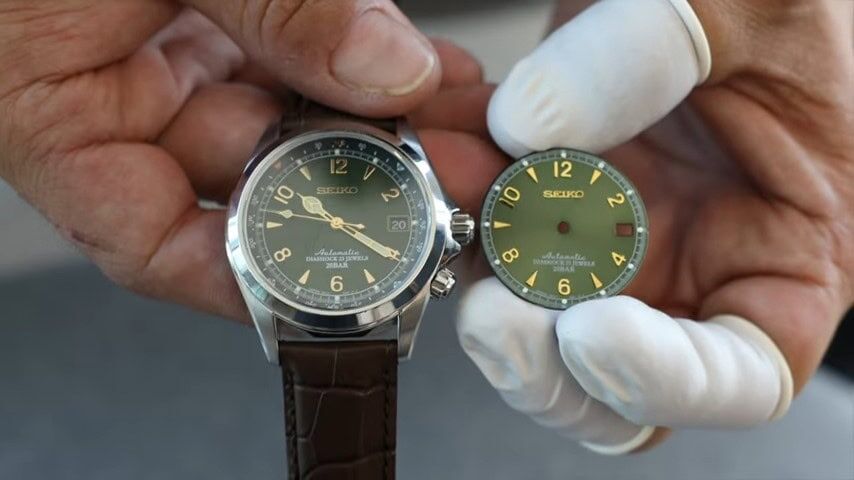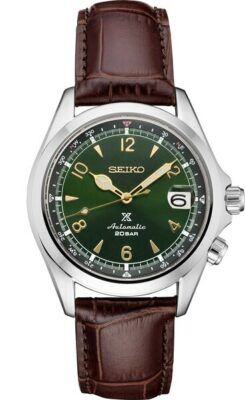How To Detect Fake Seiko Watches

What’s up, readers? Ripley Sellers here, a writer, editor, and journalist at aBlogtoWatch.
Today, I’m going to walk you through how to detect a fake Seiko watch by using a counterfeit Alpinist I recently got my hands on.
Let’s dive in and see how this convincing fake compares to the genuine article!
Key Takeaways
- The fake Seiko Alpinist had a better strap than the genuine one, which goes to show how bad the real strap is.
- The case engravings, especially the “Made in Japan” text, were sloppier on the fake.
- Inside, the fake had a decorated 4R movement disguised as a 6R15, with a plastic retaining ring and metal gears interfacing with the compass bezel.
- The dial was a dead giveaway, with glued-on lume plots, the Seiko logo, and hour markers, as well as less crisp text.
- The level of detail in the fake is scary, considering the relatively low retail price of the genuine Alpinist.
- To avoid getting fooled, closely examine the watch, compare it with a known genuine example, and don’t be afraid to open it up and check the inside.
Buying the Fake Alpinist

I found this supposed Alpinist on OfferUp for just $40, a steal compared to the usual retail price. I drove down to Long Beach to pick it up, which was a bit of a trek from LA, but it was cheaper than shipping. As soon as I got it in my hands, I had my doubts. I was wearing my real Alpinist at the time, and while the fake looked close, something wasn’t quite right.
Comparing the Straps and Case
First off, the fake strap was actually better than the real one: softer, more supple, and even with the same padding. It just goes to show how bad the genuine Alpinist strap is!
The case engravings were close but not quite as crisp on the fake. The “Made in Japan” text, in particular, looked a bit sloppy.

Movements and Inner Workings
All right, time to crack this baby open. Remember, safety first—always use finger cots!
Inside, it looks like a 6R15 movement, but I suspect it’s actually a decorated 4R, judging by the Geneva stripes on the rotor, a genuine Seiko movement but not the right one for an Alpinist. A few other red flags:
- The retaining ring feels like plastic, not metal,
- Gears turning the compass bezel are metal, not the self-lubricating polymer found in the genuine Alpinist.
- The compass bezel text isn’t as crisp.
- The date wheel font is slightly off.
Dial Differences
Here’s where the fake really shows its true colors. Everything is placed correctly, but the construction is all wrong:
- Lume plots are glued, not riveted.
- The Seiko logo is glued on, not applied.
- Hour markers are glued from behind, not stamped through the dial.
- The dial is too shiny, and the text isn’t as crisp.

You can spot these differences without even opening the watch—though having a real one to compare helps!
The Scary Part
It’s terrifying how much detail they put into faking a watch that retails for just a few hundred bucks. Using a genuine Seiko movement and a case that looks legit at a glance—imagine what they could do with a watch costing thousands!

To avoid getting burned, really scrutinize the Alpinist or any other Seiko. Compare it with a known genuine example, and if needed, open it up and peek inside. The small details make all the difference when spotting a fake Seiko watch.
Video Journey
Conclusion
I hope this detailed comparison helps you know how to detect fake Seiko watches and shows just how sneaky these counterfeits can be. Keep your eyes peeled when shopping for watches, and remember these tips for spotting a phony Seiko. Stay sharp out there, fellow watch lovers!
Read the original article here







